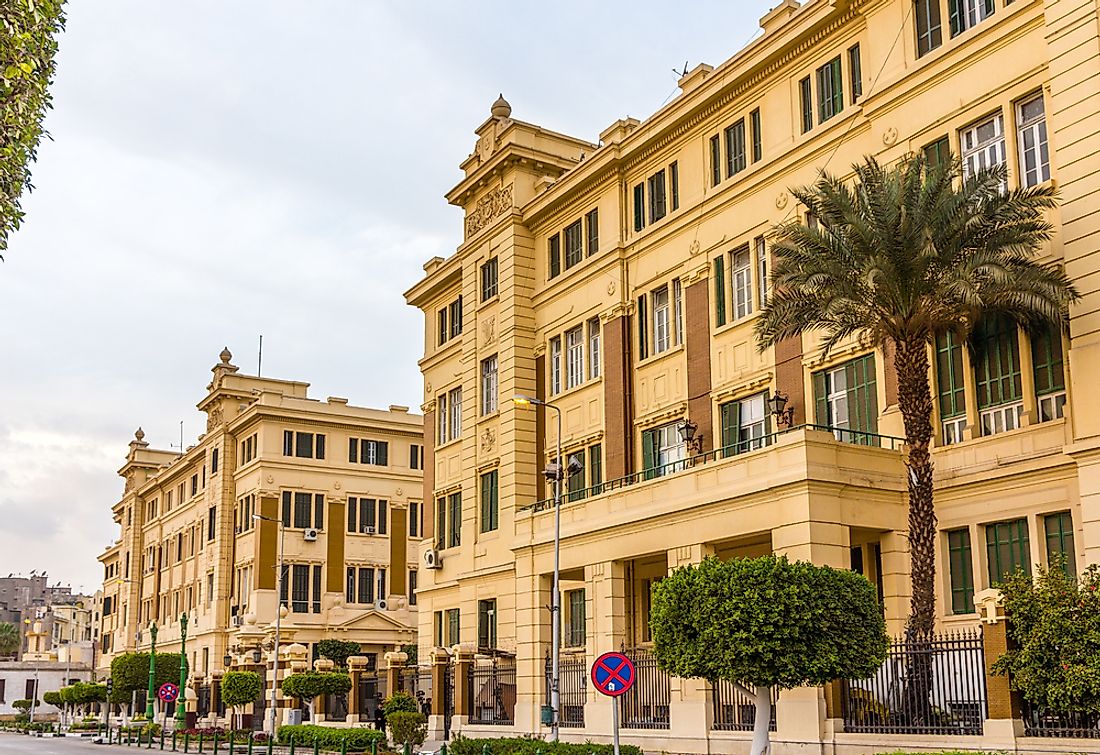Presidents Of Egypt Through History

The President of Egypt is a governmental position that has existed since 1952 when the constitutional monarchy in power before that time was overthrown. Today, people with the right to vote to elect the President based on the House of Representative's recommendation or broad public support. The President holds executive powers, appoints the Prime Ministers, and under martial law, can appoint deans of university faculties. The requirements to become President include Egyptian citizenship, being born to Egyptian parents (exclusive of dual citizenship), having military experience, and being at least 40 years of age. This article takes a look at some of the most significant Presidents over the course of Egypt’s democratic history.
Muhammad Naguib
The first President of Egypt, Muhammad Naguib, served from June 18, 1953, until November 14, 1954. He is significant in Egyptian history because he led the revolution that ended the Muhammad Ali Dynasty of Egypt and Sudan. Without the Egyptian Revolution of 1952, Egypt might not have become a democracy until many years later. As President, Naguib helped establish the first government of the Republic of Egypt and fought with the Revolutionary Command Council (RCC) to bring Egypt under civilian rule instead of the military. Losing support of the RCC was the downfall of Naguib’s role as President. He was later accused of being involved with illegal activities and a plot to become a dictator. After fighting for nearly a year for control, Naguib was beaten and agreed to resign.
Gamal Abdel Nasser
Gamal Abdel Nasser was the second President of Egypt and forced the resignation of Naguib after claiming Naguib had been involved with the Muslim Brotherhood and their attempted assassinations. He helped found the National Union (NU) single-party system as established by the 1956 Constitution of Egypt. This party ultimately nominated Nasser for the Presidency, which was accepted with broad public support. As President, his domestic and foreign policies made enemies of the United Kingdom, France, and the United States in July of 1956. Subsequently, the UK and the US retracted their offer to fund construction of the Aswan Dam.
Angry with this abandonment, Nasser decided to nationalize the Suez Canal Company in order to finance the Aswan Dam. This political move earned him overwhelming public support both nationally and internationally. The UN Security Council met on the matter and determined that it was within Egypt’s rights to control the canal as long as foreign ships were allowed to pass through. The UK, along with France and Israel, did not agree to this ruling and planned to take back control and overthrow the government. As a result, the Suez Crisis began in October of 1956. Nasser led Egypt through defensive attacks, mobilizing troops from all regions, blocking the canal’s entrance, and arming civilian militias. The US called for a withdrawal of the three countries’ troops which occurred in December of the same year and March of the next. Due to this crisis, Nasser changed residency requirements for the country and forced British, French, and non-Egyptian Jews out of the country.
Nasser went on to nationalize all remaining foreign assets and, in 1958, joined forces with Syria to create the United Arab Republic. This move brought on political turmoil within the country and the region through which Nasser remained President until his death in 1970.
Hosni Mubarak
Hosni Mubarak was the Arab Republic of Egypt’s longest serving President. In 1971, the country once again changed names and became the Arab Republic of Egypt, its current title. Mubarak served in this republic from 1981 until 2011. Under his Presidency, Egypt was readmitted to the Arab League and became home for the organization’s headquarters. The country was involved in the Gulf War of 1991 and worked to remove Iraqi forces from Kuwait. Mubarak is also remembered for improving access to affordable housing and medicine. He was also very involved in the workings of the different Ministries and would fire or suspend public officials for corrupt activities. During his terms, he survived 6 different assassination attempts that were due to his stance against Islamic fundamentalism and his friendly relations with Israel.
In 2005, because of mounting criticism in regard to his successive reelections to office, he changed the rules for the candidacy and ran a multiple-party election. Observers claimed the elections were filled with corrupt activities. Despite these allegations, Mubarak once again won the election. After violent protests against his Presidency in 2011, Mubarak resigned prior to the upcoming elections. He is currently serving time in prison on corruption charges.
Presidents Of Egypt Through History
| Presidents of Egypt | Term in Office |
|---|---|
| Muhammad Naguib | 1953-1954 |
| Gamal Abdel Nasser | 1954-1970 |
| Anwar Sadat | 1970-1981 |
| Sufi Abu Taleb | 1981 |
| Hosni Mubarak | 1981-2011 |
| Mohamed Hussein Tantawi | 2011-2012 |
| Mohamed Morsi | 2012-2013 |
| Adly Mansour | 2013-2014 |
| Abdel Fattah el-Sisi (Incumbent) | 2014-Present |











